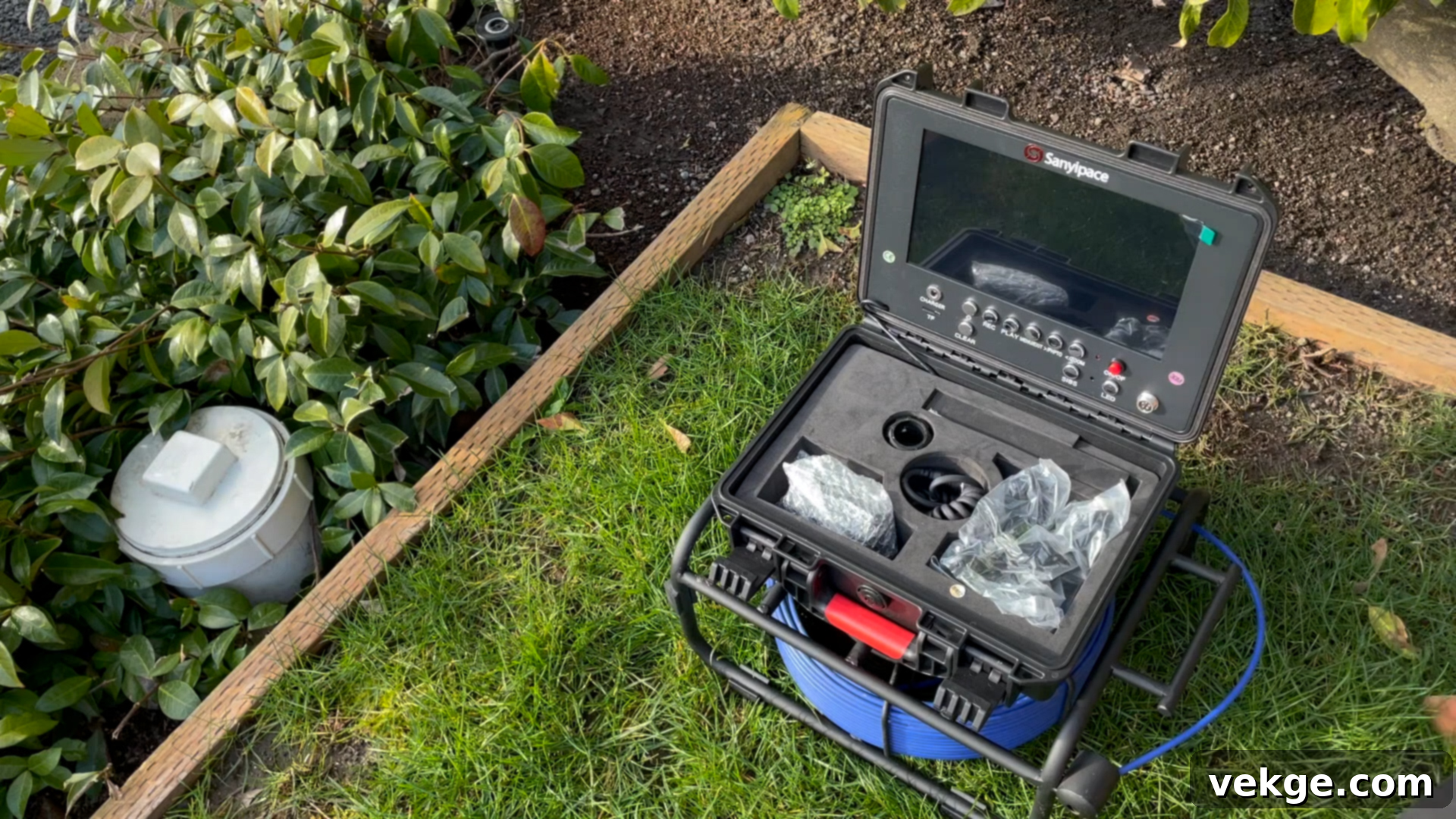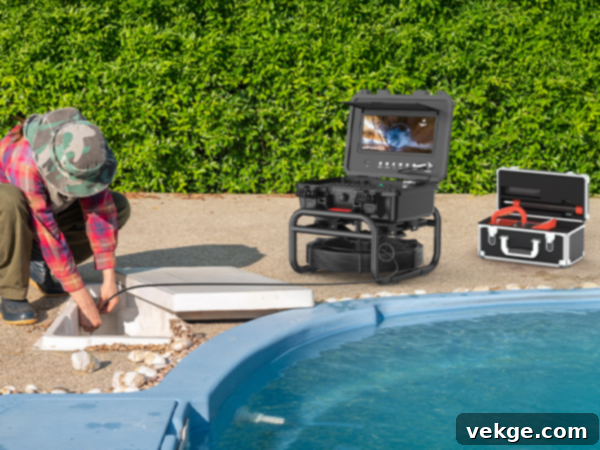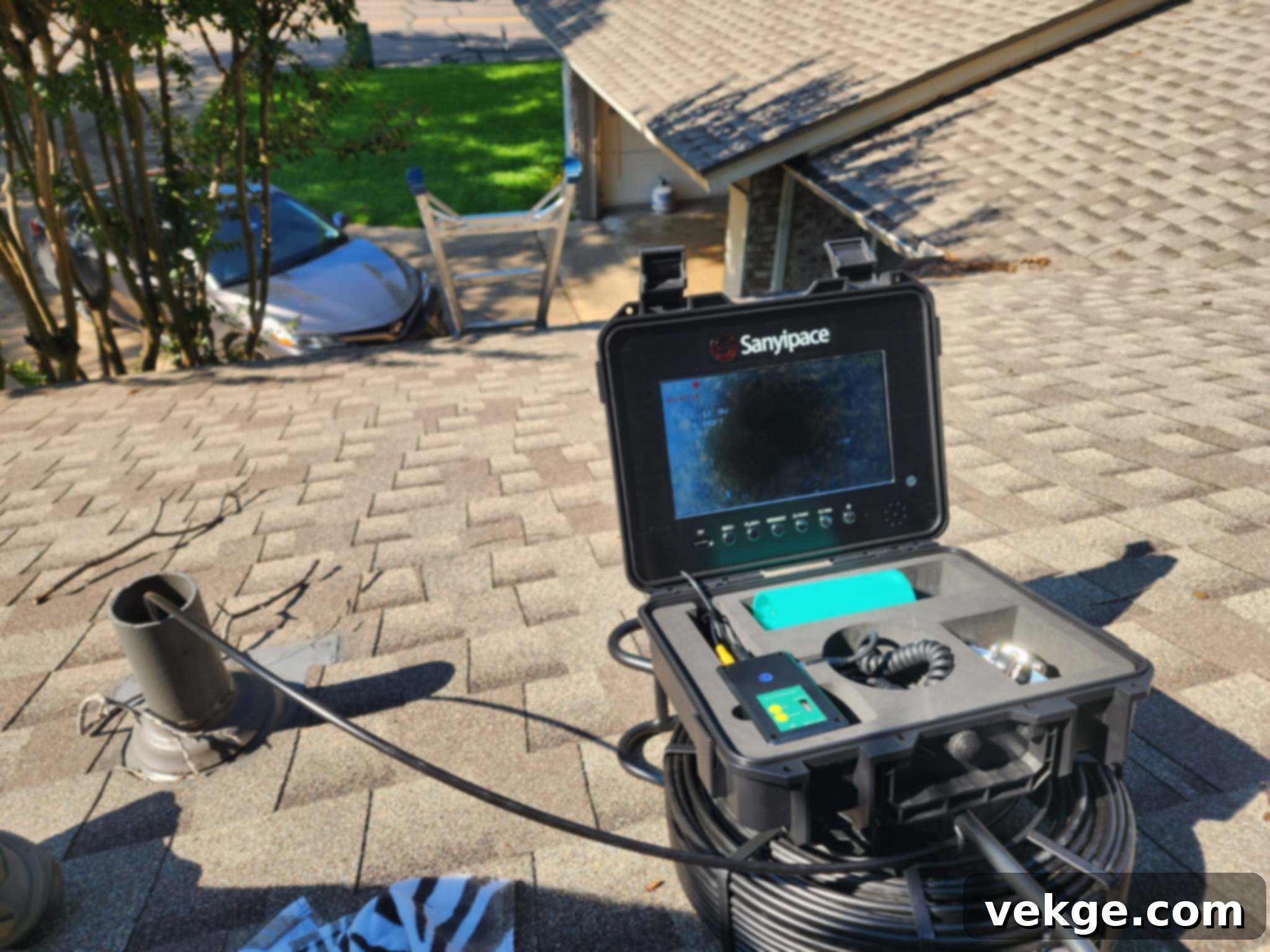The Ultimate Guide to Sewer Camera Inspections: Benefits, Costs, and DIY Tips
Do you frequently grapple with frustrating sewer problems such as recurring blockages, sluggish drainage, or unpleasant odors emanating from your pipes? These persistent issues often signal a deeper, underlying problem within your plumbing system that has gone unaddressed for too long. While many homeowners overlook it, regular sewer camera inspections are a proactive measure that can help you identify and resolve numerous preventable issues before they escalate into costly emergencies.
Despite the clear advantages, a common question still lingers in many people’s minds: “Is a sewer camera inspection truly worth the investment?” The unequivocal answer is a resounding yes. This comprehensive article delves into everything you need to know about sewer camera inspections, offering an in-depth look at the myriad benefits of routine pipe evaluations, the types of problems they can uncover, the inspection process, associated costs, and even considerations for DIY enthusiasts. By the end, you’ll understand why this often-underestimated service is a critical component of responsible home maintenance.
Why Get a Sewer Camera Inspection?
A sewer or plumbing camera inspection employs a sophisticated, high-resolution, waterproof camera attached to a flexible rod. This specialized equipment is carefully navigated through your home’s pipe system, allowing plumbing professionals to conduct a thorough visual assessment of the internal condition of your sewer lines. The primary advantage? It enables a detailed inspection without the destructive and often expensive need for excavation, revolutionizing how plumbing issues are diagnosed and resolved.
Key Benefits of Sewer Camera Inspection:
- Pinpoint Accuracy and Problem Identification: Gone are the days of guesswork. A sewer camera inspection allows professionals to visually identify the exact location and precise nature of any pipe problem. Whether it’s a stubborn clog, a hairline crack, an invasive tree root, a severe pipe collapse, or corrosion, the camera provides clear evidence. This precision means plumbers can recommend the most effective and least invasive repair solutions, saving you time and money.
- No Unnecessary Digging (Trenchless Technology): One of the most significant advantages is the ability to inspect pipes without having to dig up your yard or break through concrete foundations. This trenchless approach preserves your landscaping, driveway, and property, drastically reducing repair time, labor costs, and the need for expensive restoration work after the plumbing fix.
- Prevent Bigger, Costlier Problems: Early detection is key to preventing catastrophic plumbing failures. Catching minor issues like nascent clogs, subtle corrosion, or small root intrusions early on can prevent them from developing into major pipe bursts, widespread backups, or complete sewer line replacements, which are far more expensive and disruptive to address.
- Essential for Homebuyer Protection: For prospective homebuyers, a sewer inspection is an invaluable due diligence step. While a general home inspection covers visible components, it often misses hidden problems lurking within the sewer lines. A pre-purchase camera inspection can uncover undisclosed issues that could lead to thousands of dollars in repairs post-purchase, providing crucial negotiation power or even prompting you to reconsider the investment.
- Provides Real Evidence for Decisions: The inspection generates detailed video footage or high-resolution photos of the pipe’s interior. This tangible evidence is not only vital for understanding the problem yourself but also highly beneficial for insurance claims, getting accurate quotes from multiple contractors, or seeking a second professional opinion regarding recommended repairs.
- Optimized Maintenance and Longevity: Regular inspections can help homeowners understand the overall health and age of their plumbing system. This knowledge allows for proactive maintenance scheduling, extending the lifespan of your sewer lines and preventing unexpected failures.
When Should You Get a Sewer Camera Inspection?

Determining the right time for a sewer camera inspection can save you considerable stress and expense. Consider the following common scenarios as strong indicators that an inspection is warranted:
- Recurring Backups or Slow Drains: If you’re constantly dealing with drains that empty slowly or toilets that back up frequently, it’s a clear sign of an obstruction or damage within the sewer line that traditional snaking might not fully resolve.
- Unusual Gurgling Sounds from Pipes: Gurgling noises coming from your drains, especially after flushing a toilet or running water, often indicate trapped air or blockages that are disrupting proper water flow and venting.
- Persistent Foul Odors: A persistent smell of sewage in or around your property suggests a potential break in the sewer line, a significant blockage, or issues with your venting system allowing sewer gases to escape.
- Visible Water Pooling in the Yard: If you notice unexplained wet spots, soggy areas, or depressions in your lawn, particularly near your sewer line’s path, it could be a sign of a broken or leaking sewer pipe underground.
- Before Purchasing a Home: As mentioned, this is a crucial step for homebuyers to uncover hidden liabilities and assess the condition of the property’s main sewer line, which is typically the homeowner’s responsibility.
- After Major Plumbing Work or Renovations: Any significant plumbing installation or structural changes to your home can potentially impact your sewer lines. An inspection ensures that no damage occurred during the work and that new connections are secure.
- If Your Home is Over 30 Years Old: Older homes often have aging pipe systems (e.g., cast iron, clay) that are more susceptible to corrosion, cracks, root intrusion, and general wear and tear. A proactive inspection can identify vulnerabilities before they become critical.
- Prior to Landscaping Projects or Tree Planting: Knowing the exact location and condition of your sewer lines can prevent accidental damage during digging for landscaping or ensure that new tree roots won’t interfere with pipes in the future.
If you encounter any of these problems, or if you simply haven’t had your sewer lines checked in decades, it’s imperative to act promptly. Timely inspection can prevent minor annoyances from escalating into severe, costly situations that demand extensive repairs and significant disruptions to your daily life.
What Problems Can a Sewer Camera Inspection Detect?

Modern sewer cameras are equipped with advanced, high-definition technology designed to provide unparalleled visibility inside your plumbing system. For instance, many high-quality Sanyipace sewer cameras boast features such as self-adjusting camera heads, powerful LED lights for clear illumination in dark pipes, accurate meter counters to pinpoint distances, and even 360° rotating cameras. These capabilities allow you to observe the real-time conditions within your pipes with exceptional clarity, revealing a wide array of potential problems:
- Tree Root Intrusion: This is a prevalent issue, especially in older neighborhoods with mature trees. Tree roots are naturally drawn to the moisture and nutrients found in sewer pipes. They can infiltrate through tiny cracks, loose joints, or even directly puncture pipes, growing into dense masses that block flow and can eventually cause severe structural damage.
- Grease or Sludge Build-Up: A common culprit in both residential and commercial settings (particularly restaurants), improper disposal of fats, oils, and grease (FOG) down drains leads to stubborn build-up. This viscous sludge adheres to pipe walls, constricting the flow and acting as a magnet for other debris, leading to frequent and severe clogs.
- Cracked, Collapsed, or Disjointed Pipes: Over time, pipes can suffer structural damage due to various factors. Cracks can form from age, ground shifting, heavy vehicle traffic above the line, or even improper installation. Collapsed sections occur when pipes completely break inward, creating an impenetrable barrier. Disjointed pipes happen when sections pull apart, often due to soil erosion or ground movement, allowing waste to leak into the surrounding soil.
- Bellied Pipes (Sagging Sections): A “belly” or sag in a pipe occurs when a section of the line sinks due to unstable soil conditions or poor installation. This creates a low spot where water and solid waste can collect, preventing proper drainage and leading to recurrent clogs and backups, as waste never fully clears the system.
- Corrosion: Particularly problematic in older cast iron or galvanized steel pipe systems, corrosion is the gradual deterioration of the pipe material. It can weaken the pipe walls, reduce the internal diameter, and create rough surfaces where debris easily catches, leading to reduced flow, leaks, and eventual pipe failure.
- Foreign Objects: The camera can reveal items that should never have entered the sewer system, such as children’s toys, “flushable” wipes (which often aren’t truly flushable), feminine hygiene products, construction debris, or even small animals. These items can create significant blockages and require professional removal.
- Improper Pipe Installation: The inspection can also uncover errors from previous installations, such as incorrect pipe slopes, misaligned sections, or inappropriate materials, which can contribute to ongoing drainage problems.
How Does the Process Work?
The process of conducting a sewer camera inspection is straightforward and non-invasive, typically performed by trained plumbing technicians. Once the necessary equipment is set up and confirmed to be in proper working order, the inspection proceeds through a series of key steps:
Step 1: Locate Access Point
The first step involves identifying a suitable access point to insert the camera into your sewer line. The most common and ideal access point is a “cleanout” — a capped pipe usually located in your yard, basement, or sometimes near a bathroom fixture. These cleanouts are designed specifically for plumbing access and allow direct entry to the main sewer line without disturbing your property.
Step 2: Insert the Camera
Once the access point is established, the high-resolution, waterproof camera, securely attached to a flexible rod, is carefully guided into the sewer pipe. The flexibility of the rod allows it to navigate bends and turns within the pipe system, ensuring a comprehensive view of the entire line from the access point to the city main or septic tank connection.
Step 3: Live Monitoring and Assessment
As the camera travels through the pipe, a technician watches the live video feed on a monitor in real-time. They are expertly trained to identify various pipe anomalies, including clogs, cracks, root intrusions, corrosion, and structural damage. During this process, they will typically record the footage and make detailed notes, often marking the exact distance and depth of any problematic areas to aid in precise location and future repairs.
Step 4: Receive the Report and Recommendations
Upon completion of the inspection, you will receive a comprehensive report. This usually includes a digital video recording of the inspection, along with a written summary detailing all findings, identified issues, their exact locations, and recommended solutions. Many advanced services also utilize radio transmitters on the camera head, allowing technicians to use a surface locator to precisely pinpoint the underground problem area, even indicating its depth. This detailed information empowers you to make informed decisions about necessary repairs.
How Much Does It Cost?
In most regions, the cost of a professional sewer camera inspection typically ranges between $200 and $500. However, the final price can fluctuate based on several factors:
- Pipe Length and Complexity: Longer sewer lines or systems with numerous bends and access points may take more time to inspect, potentially increasing the cost.
- Property Accessibility: If the primary cleanout is difficult to access, or if additional entry points need to be used or created, this can add to the labor cost.
- Whether Combined with Other Plumbing Services: Some plumbing companies offer discounts if the camera inspection is part of a larger service package, such as drain cleaning or pre-purchase home inspections.
- Features of the Sewer Camera: More advanced camera systems, offering features like self-leveling heads, sonar locators, higher resolution, or 360-degree rotation, might be used by certain professionals and could influence the pricing structure.
- Geographic Location: Costs can vary significantly based on the local market rates for plumbing services in your specific city or state.
While an initial cost, consider this: the average cost of a full sewer line replacement can range from $3,000 to $10,000 or even more, depending on the extent of the damage and the method of repair. In contrast, a sewer camera inspection is an incredibly smart, affordable precaution. It’s a small investment that can save you thousands of dollars by preventing major disasters and allowing for targeted, less invasive repairs rather than full-scale replacements.
Can I Do a Sewer Camera Inspection Myself?

Yes, for certain situations, you absolutely can conduct a sewer camera inspection yourself. The market now offers a wide range of portable, user-friendly sewer cameras that are ideal for home use, available for both purchase and rent. These DIY units typically include a camera-equipped cable that you insert into a cleanout access point, allowing you to monitor a live video feed on a built-in screen or a connected smartphone/tablet. For minor drainage problems, routine preventative maintenance, or simply to get a general overview of your pipe’s condition, a DIY inspection can be a cost-effective and convenient solution.
Benefits of a DIY inspection include:
- Cost Savings: Avoid professional service fees.
- Immediate Action: Get instant visual feedback on your pipe condition.
- Empowerment: Gain a better understanding of your home’s plumbing.
- Routine Checks: Ideal for proactive homeowners who like to stay on top of maintenance.
However, some situations are unequivocally better handled by seasoned professionals. It’s crucial to recognize the limitations of DIY when facing more complex or severe plumbing issues:
- Camera Obstruction: If the camera encounters a complete blockage and cannot proceed, a professional may have specialized tools (like hydro-jetting) to clear the path before inspection.
- Complex Pipe Structures: Older homes or unusual plumbing layouts can be difficult to navigate, and professionals have the experience to interpret what they see in non-standard systems.
- Discovering Serious Damage: If your DIY inspection reveals significant issues like collapsed pipes, extensive root intrusion, or widespread corrosion, you’ll need professional expertise to diagnose the severity and recommend appropriate repair strategies. Attempting complex repairs without the proper knowledge or tools can worsen the problem and lead to more expensive damage.
- Precision Locating: While some DIY cameras offer basic distance markers, professional equipment often includes advanced locators to pinpoint underground problems with pinpoint accuracy, which is crucial for trenchless repairs.
- Insurance Claims: Professional inspection reports and video footage often carry more weight and are more readily accepted by insurance companies for claim processing.
Overall, performing a DIY sewer camera inspection can certainly save money and time for straightforward checks. Just ensure you invest in or rent the right equipment, understand its proper usage, and know when to call in the experts for situations that demand their specialized knowledge and advanced tools. A blend of DIY vigilance and professional intervention ensures the best care for your plumbing system.
Final Verdict: Is a Sewer Camera Inspection Worth It?
After examining the numerous advantages, the answer remains unequivocally clear: yes, a sewer camera inspection is undeniably worth it. It transcends being merely a diagnostic tool; it is a critical investment in the longevity and health of your home’s most essential infrastructure. By offering clear, visual insight into the hidden world of your pipes, it empowers you to detect potential problems early on, long before they can escalate into devastating and financially draining emergencies.
Whether you’re troubled by a persistently slow drain, conducting due diligence before purchasing an older home, or simply performing routine preventative maintenance, a sewer camera inspection provides unparalleled clarity and profound peace of mind. For the vast majority of homeowners, it’s not just a smart choice—it’s an absolute necessity for protecting your property, your budget, and your family’s comfort.
Frequently Asked Questions About Sewer Camera Inspections
How Long Does an Inspection Take?
Most standard sewer camera inspections typically take between 30 and 90 minutes. The exact duration can vary depending on several factors, including the overall length of the pipe system being inspected, the condition of the pipes (e.g., if there are minor obstructions that slow the camera’s progress), and the number of access points. It may take longer if the technician needs to thoroughly investigate a specific issue in detail, such as a major blockage or structural damage, or if the main cleanout is difficult to access.
Can Sewer Cameras Detect Leaks?
While sewer cameras don’t directly “detect” active water leaks in the same way a moisture meter would, they are incredibly effective at identifying the underlying causes of leaks. The camera can clearly show visible cracks, broken pipe sections, fractured joints, extensive corrosion, or severe root intrusion. All of these conditions are common culprits that compromise the integrity of the pipe and lead to water leaking into the surrounding soil. By identifying these structural deficiencies, the camera provides crucial evidence of where a leak is likely occurring. Furthermore, some advanced sewer camera systems can be paired with devices that emit a signal, allowing a technician with a locator to pinpoint the precise underground location of the camera head and, consequently, the problem area, making leak detection indirect but highly effective for repair planning.
Does It Work on all Types of Pipes?
Yes, sewer cameras are designed to work effectively on virtually all common types of plumbing pipes found in residential and commercial properties. This includes modern materials like PVC and ABS, as well as older materials such as clay (terra cotta), cast iron, concrete, and even Orangeburg pipes. The primary constraint for a successful inspection is the internal diameter of the pipe. Generally, the pipe needs to be wide enough, usually at least 2 inches in diameter, for the camera head to pass through without getting stuck or obstructed. Very small diameter pipes or those that are severely collapsed, highly corroded with significant build-up, or completely blocked may limit the camera’s ability to navigate or provide clear visibility throughout the entire line.
